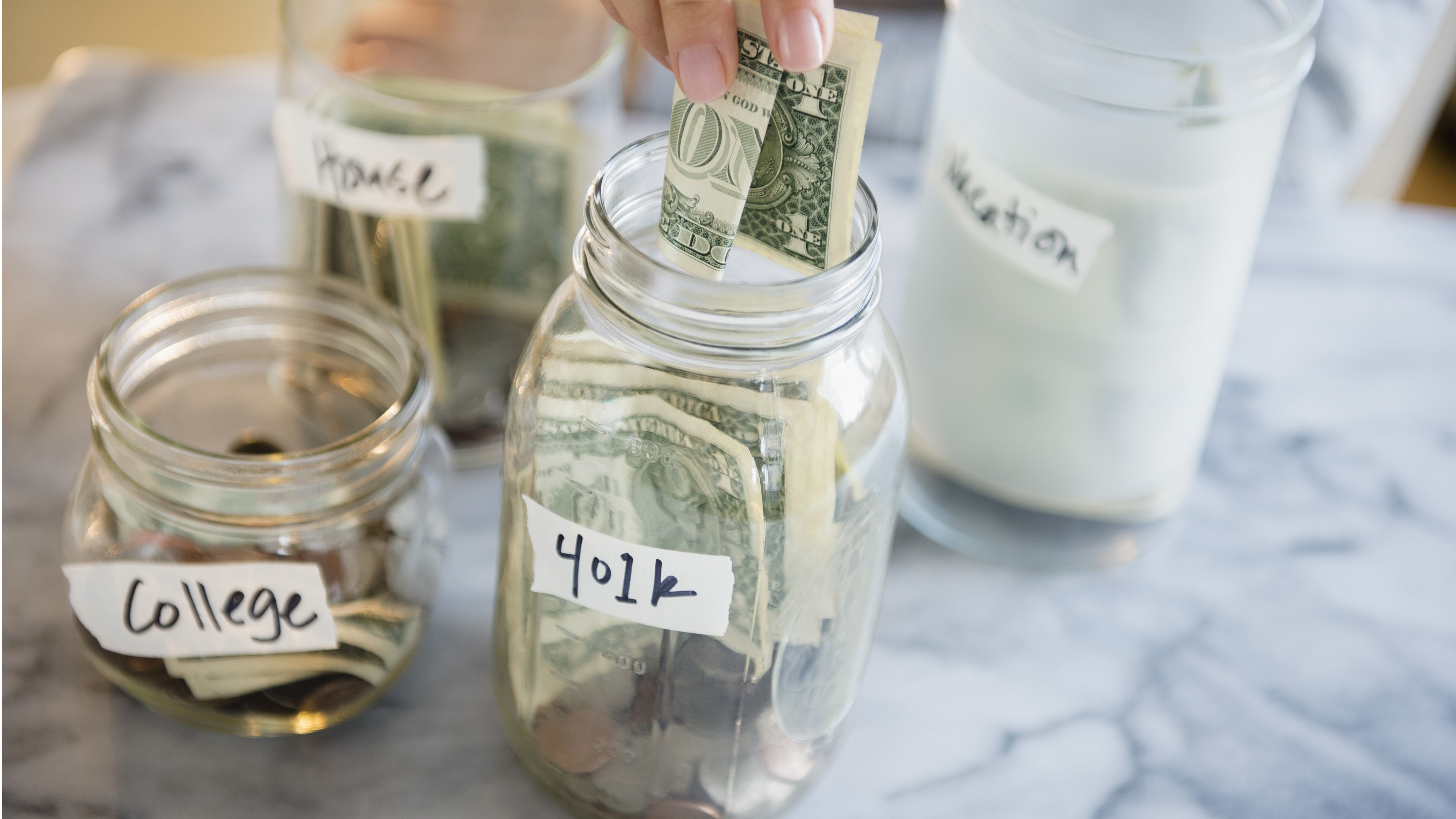To Auto-Increase or Not to Auto-Increase Your 401(k) Contribution Rate
Automatically increasing your 401(k) contribution rate can be a great way to boost your savings. But could your next dollar work better for you elsewhere?

During the past 30 years, there has been an important revolution in the administration of 401(k) plans. Often referred to as auto-increase or auto-escalation, here’s how it works: If you are automatically enrolled in a plan and don’t opt out of the auto-increase feature, then your deferral rate will increase over time, up to the plan maximum. The frequency, rate of increase and plan maximum can vary, but a common approach is an annual increase of 1 percentage point on the anniversary of your initial enrollment, up to a 10% maximum.
According to a 2021 study by the Plan Sponsor Council of America, more than half of all defined contribution plans have adopted an auto-escalation approach. It has also become increasingly common for plans with a default auto-increase provision to increase your rate above what is needed to receive the maximum employer matching contribution. For example, a plan that matches 100% of contributions up to 6% of pay deferred may automatically enroll you at 3% and then increase your rate by 1 percentage point per year until you reach a 10% auto-increase cap.
Most experts agree that, at a minimum, everyone participating in a plan offering a matching rate of 25% and higher should defer enough to receive the plan’s full matching contribution, as this “free money” provides a better rate of return than any alternative. For example, if the plan’s default deferral rate is 3%, but the plan matches 50% of contributions up to 6% of pay, you should (at a minimum) allow any rate increase to take place at least until reaching the 6% match-eligible deferral rate.
From just $107.88 $24.99 for Kiplinger Personal Finance
Become a smarter, better informed investor. Subscribe from just $107.88 $24.99, plus get up to 4 Special Issues

Sign up for Kiplinger’s Free Newsletters
Profit and prosper with the best of expert advice on investing, taxes, retirement, personal finance and more - straight to your e-mail.
Profit and prosper with the best of expert advice - straight to your e-mail.
Is an Auto-Increase in Your 401(k) Contributions Best?
If you can afford additional savings beyond getting the full employer matching contributions, you may question whether allowing additional voluntary (unmatched) 401(k) deferrals is the best use of your income. Or should you opt out of further rate increases to address other financial needs first?
Unfortunately, you won’t find this issue addressed in most benefit communications. They tend to treat each individual program (medical, dental, life insurance, 401(k), etc.) separately without considering how to allocate your income among the available choices, let alone consider other financial needs such as debt payment.
This is understandable given the almost infinite number of options available. So, how can you decide whether the best use of your money is to allow your deferral rate to automatically increase? While it’s not possible to recommend a single course of action, given each individuals’ unique circumstances, here are some alternatives to higher voluntary savings you might also consider.
Build Your Emergency Savings
Financial advisers stress the importance of having a side fund to pay unplanned expenses due to unforeseen events, such as a car accident, storm damage, unreimbursed medical expenses, etc. The amount you need depends on your annual income, but ideally you would start with at least $1,000 if you have no other savings. And pretax or Roth 401(k) contributions are not a good way to save for unexpected expenses for several reasons.
First, if you are under age 59½, the IRS will permit in-service withdrawals only for certain reasons that may not include emergency expenses. Further, the taxable portion of any withdrawal prior to age 59½ is subject to a 10% excise tax. The IRS also mandates that 20% of the taxable balances withdrawn – regardless of age – be withheld for federal income taxes.
Consider building emergency savings in a separate account outside of your 401(k) plan. Employers are starting to offer their employees help with funding these types of savings accounts by letting you contribute through regular payroll deductions.
Open a Health Savings Account (HSA)
When a person enrolls in a qualified high-deductible health plan (HDHP), employers may also offer their employees the ability to contribute to a health savings account (HSA) to pay for qualified medical expenses on a tax-preferred basis. Both 401(k) plans and HSAs offer the ability to save on a tax-preferred basis, but the HSA has additional tax benefits in saving for qualified health care expenses not available in a 401(k) plan per the chart below.

In saving for future health care expenses, most financial experts agree that you should prioritize funding your HSA up to the annual limit before making voluntary contributions to your 401(k) plan. In 2022, you can make HSA contributions up to $3,650 if you have self-only coverage or up to $7,300 for family coverage. If you are at least age 55, you are permitted an additional $1,000 in annual catch-up contributions.
There is even a school of thought that the tax benefits of an HSA are so valuable they should be prioritized over receiving matching contributions, depending on your tax bracket and matching rate. But if you aren’t willing to do a more sophisticated analysis, funding the HSA next after getting your full matching contribution is a good rule of thumb.
Pay Down Credit Card Debt
A 2021 survey by the American Bankers Association estimated that more than 100 million credit card accounts carry a monthly balance. And there is a high cost to carry that debt: The third-quarter 2022 average annual percentage interest rate (APR) on interest-accruing credit cards is now 18.43%, and this increases to 22.21% for new card offers.
Based on these figures, there are likely millions of people who must decide between contributing more to their 401(k) plan or paying down credit card debt. To help frame that decision, compare current credit card rates to a recent analysis by Fidelity Investments indicating that the average annual return of a diversified investment portolio over the past 75 years varied (depending on level of risk taken) from 5% to 9%.
So, for most people, your credit card debt will grow faster (based on the APR) than the assets available to service it. This indicates that it’s wise to prioritize paying down your credit card debt over adding to voluntary savings.
Further, paying down your credit card debt has the added benefit of lowering your credit utilization percentage (the amount owed to your creditors compared to the maximum credit available) and, in turn, raising your credit score. A better credit score not only can qualify you for a lower interest rate and higher credit limits on future borrowing, but potentially lowers future insurance rates, as well as reducing any upfront deposits required for cell phones, utilities and housing.
Most of the messages we see about retirement plans stress the importance of savings and needing to start as soon as possible. There is no doubt that adding default provisions to 401(k) plans has furthered those goals. But if you really want to enhance your overall financial wellness, consider other forms of savings (including eliminating debt) as well as additional voluntary contributions.
Profit and prosper with the best of Kiplinger's advice on investing, taxes, retirement, personal finance and much more. Delivered daily. Enter your email in the box and click Sign Me Up.
Alan Vorchheimer is a Certified Employee Benefits Specialist (CEBS) and principal in the Wealth Practice at Buck, an integrated HR and benefits consulting, technology and administration services firm. Alan works with leading corporate, public sector and multi-employer clients to support the management of defined contribution and defined benefit plans.
-
 Tip: Ways to Track Your Credit Card Rewards
Tip: Ways to Track Your Credit Card RewardsHere are the best strategies and apps to help you stay current with your credit card rewards.
-
 How New Investors Can Pick Their Perfect Portfolio, According to a Pro
How New Investors Can Pick Their Perfect Portfolio, According to a ProSee what Cullen Roche has to say about finding your perfect portfolio as a new investor and his two-word answer on where he thinks the stock market is headed in 2026.
-
 HNW Retirees: Don't Overlook The Benefits of Social Security
HNW Retirees: Don't Overlook The Benefits of Social SecurityWealthy retirees often overlook Social Security. But timed properly, it can drive tax efficiency, keep Medicare costs in check and strengthen your legacy.
-
 High-Net-Worth Retirees: Don't Overlook These Benefits of Social Security
High-Net-Worth Retirees: Don't Overlook These Benefits of Social SecurityWealthy retirees often overlook Social Security. But timed properly, it can drive tax efficiency, keep Medicare costs in check and strengthen your legacy.
-
 Do You Have an Insurance Coverage Gap for Your Valuables? You May Be Surprised to Learn You Do
Do You Have an Insurance Coverage Gap for Your Valuables? You May Be Surprised to Learn You DoStandard homeowners insurance usually has strict limits on high-value items, so you should formally "schedule" these valuable possessions with your insurer.
-
 8 Practical Ways to Declutter Your Life in 2026: A Retirement 'Non-Resolution' Checklist
8 Practical Ways to Declutter Your Life in 2026: A Retirement 'Non-Resolution' ChecklistHere's how to stop wasting your energy on things that don't enhance your new chapter and focus on the things that do.
-
 To Retire Rich, Stop Chasing Huge Returns and Do This Instead, Courtesy of a Financial Planner
To Retire Rich, Stop Chasing Huge Returns and Do This Instead, Courtesy of a Financial PlannerSaving a large percentage of your income, minimizing taxes and keeping spending in check can offer a more realistic path to retiring rich.
-
 New Year, New Retirement Rules: Here's How You Can Keep Up as the Landscape Changes
New Year, New Retirement Rules: Here's How You Can Keep Up as the Landscape ChangesFor a successful modern retirement, prepare for a longer life, manage high health care costs and prioritize your social life and purpose.
-
 7 Creative Ways to Spend Less and Save More In Retirement, Courtesy of a Financial Pro
7 Creative Ways to Spend Less and Save More In Retirement, Courtesy of a Financial ProWorried you won't have enough money later in life? Try redesigning your vision of retirement, and you may find your savings go further than you thought.
-
 I'm an Annuities Pro: This Is How You Can Cover the Income Gap While Your Social Security Benefits Grow
I'm an Annuities Pro: This Is How You Can Cover the Income Gap While Your Social Security Benefits GrowTaking Social Security later results in higher future income, but that can create an income gap. Annuities can boost income until you file for benefits.
-
 I'm a Financial Pro: You Really Can Make New Year's Money Resolutions That Stick (and Just Smile as Quitter's Day Goes By)
I'm a Financial Pro: You Really Can Make New Year's Money Resolutions That Stick (and Just Smile as Quitter's Day Goes By)The secret to keeping your New Year's financial resolutions? Just make your savings and retirement contributions 100% automatic.

